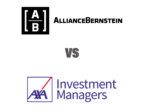Axa Investment Managers this month launched two high yield funds to retail investors in Hong Kong, the Axa World Funds – Asian High Yield Bonds Fund and the Global High Yield Bonds Fund, according to records from the Securities and Futures Commission.
Previously, both funds were available only to accredited investors in Singapore, according to data from FE Analytics.
May 2017 was the last time the firm registered funds with the SFC. They were the Asian Short Duration Bonds Fund and the Emerging Markets Short Duration Bonds Fund.
Asia HY
Only a few SFC-registered products focus on Asia high yield bonds. Out of the 71 SFC-authorised high yield bond funds, seven are focused in Asia, according to data from FE Analytics. By comparison, there are 26 global high yield funds.
In Singapore, there are only 12 Asia high yield bond funds offered to accredited investors, versus the 79 global high yield bond funds available to the market.
Within the high yield space in Singapore, US high yield bond funds performed the best year-to-date, while European high yield funds were the worst, according to FE data.

Source: FE Analytics
Jimond Wong, managing director and senior portfolio manager for Pan-Asia bonds at Manulife Asset Management, previously warned that the default rate of Asian high yield bonds is likely to grow to 3% next year from the current 1.3% level.
“Some of the high yield issuers in Asia are unable to issue new bonds in the local bond market so they can only seek to refinance to settle their outstanding debt,” he said.
He said that the default cases may come from China’s small-scale private property developers, industrial companies or some issuers from India. But the companies with a higher probability of default make up only a small portion of the whole credit market.
Moody’s recent 2019 global outlook warned on weakening global credit conditions “as economic growth decelerates, funding costs increase, liquidity tightens and market volatility returns”.
The default rate of nonfinancial companies the firm rates in emerging markets is 1.0%.
However, “the ranks of very low-rated issuers continue to swell, reflecting the low credit quality of new issuers. Corporate leverage in emerging markets is also at a historical high.
“The gross leverage ratio, which assesses total debt relative to EBITDA, has been rising in emerging market companies overall. Debt affordability, as measured by the interest coverage ratio, has weakened compared with levels in the early 2000s.
“In addition, countries with relatively shorter corporate debt maturity will be more prone to rollover risks and vulnerable to a sudden liquidity crunch. These countries include China, Brazil and Argentina, which have a median corporate debt maturity of no more than four years.

















